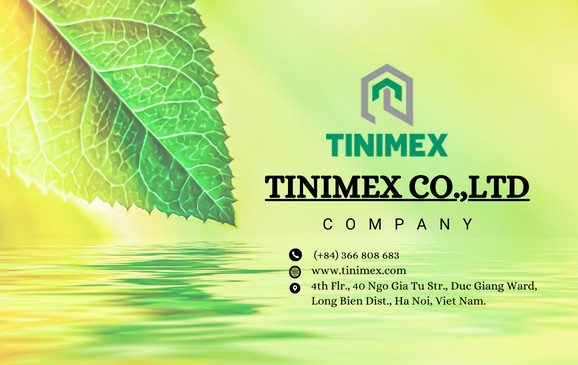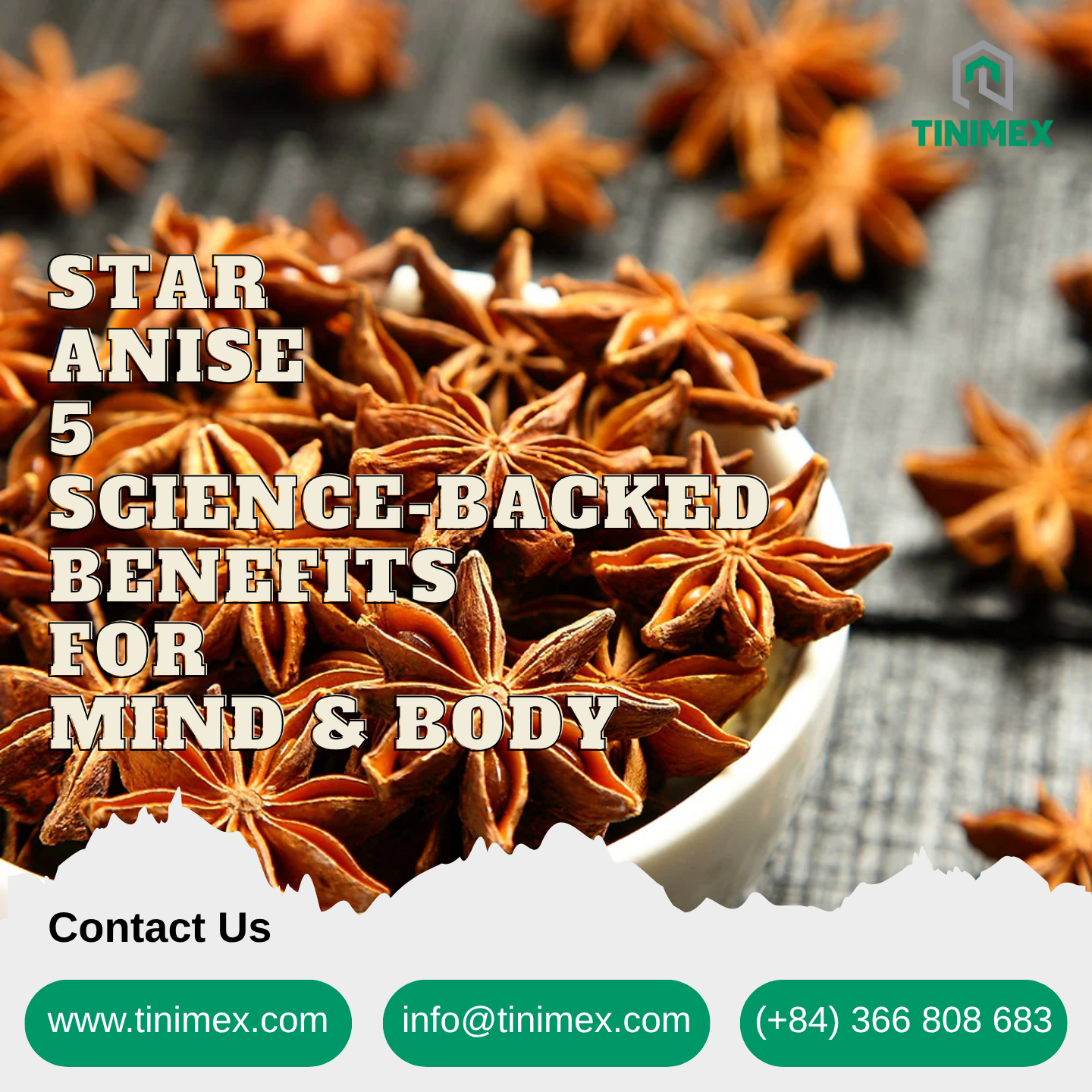Star Anise Deep Dive: 5 Phases That Power an Industry
Introduction: A Star Spice in Global Demand
Star anise, recognized instantly by its striking star-shaped pods and warm, licorice-like fragrance, is more than just a kitchen spice. It’s a botanical powerhouse, revered not only for its culinary charm but also for its medicinal properties and industrial value. In recent decades, this humble fruit has journeyed from small farms in Southeast Asia to the shelves of pharmaceutical giants and premium wellness brands. What lies behind this transformation is a complex, high-value chain driven by scientific advancement, global demand, and deep-rooted agricultural heritage. In this article, we explore the five defining stages that propel star anise from local harvests to international prominence.

Stage 1: Cultivation – The Birthplace of Quality
The first stage of the star anise journey begins in mountainous regions of Vietnam, Yunnan (China), and northern Laos—areas blessed with ideal climate conditions: warm temperatures, rich loamy soil, and consistent rainfall. Here, Illicium verum, the botanical name for true star anise, grows as a slow-developing evergreen tree, reaching maturity only after five to seven years.
-
Traditional farming knowledge: Many star anise plantations are family-owned, with knowledge passed down through generations. Farmers know the perfect time to prune, the correct sun-drying techniques, and the signs of peak oil content—skills that machines and algorithms have yet to replicate with equal precision.
-
Agroforestry integration: Increasingly, star anise is grown alongside tea, cinnamon, and native forest species in agroforestry systems that enhance biodiversity, retain moisture, and mitigate erosion. This ecological approach strengthens sustainability while supporting farmer income diversification.
-
Seasonal impact: Spring and autumn harvests differ subtly in chemical composition. Spring star anise tends to be lighter in color and higher in essential oil content, making it more desirable for fragrance and health industries. Autumn star anise, on the other hand, is typically denser, better suited for culinary use.
Why this stage matters: The quality of star anise is fundamentally rooted in its terroir. Soil nutrition, sun exposure, and drying practices all influence the spice’s value and usability downstream.
Stage 2: Processing – Preserving Potency and Safety
Once the star-shaped pods are harvested, their journey continues through meticulous post-harvest handling—a critical phase that determines safety, shelf life, and marketability.
-
Drying and curing: The pods are typically sun-dried on bamboo mats or elevated platforms to maintain airflow. Proper drying not only preserves color and flavor but also prevents mold formation and toxin buildup.
-
Essential oil extraction: Star anise’s prized essential oil is extracted through steam distillation. The yield, typically around 5–7%, contains up to 90% trans-anethole—responsible for its sweet scent and medicinal properties. Importantly, it also yields shikimic acid, a vital precursor in the synthesis of antiviral medications like oseltamivir (Tamiflu).
-
Safety protocols: Contamination from heavy metals, pesticides, or mold (especially aflatoxins) is a concern. Reputable producers perform regular laboratory tests to ensure compliance with international food and pharmaceutical safety standards.
Why this stage matters: Improper handling or insufficient testing can result in the degradation of valuable compounds—or worse, pose health hazards. The processing phase is where high-quality star anise is distinguished from substandard or even dangerous material.
Stage 3: Certification and Quality Assurance – Trust Through Transparency
With increasing global scrutiny on food safety and product integrity, certification has become a critical gateway to international markets.
-
Organic and fair-trade labels: Producers seeking organic certification must demonstrate pesticide-free practices and eco-friendly soil management. Fair-trade certifications also demand ethical labor practices and transparent sourcing.
-
Species identification safeguards: Since Japanese star anise (Illicium anisatum) is toxic and visually similar to true star anise, misidentification is a known risk. DNA barcoding and GC-MS (gas chromatography–mass spectrometry) fingerprinting are essential to prevent contamination and ensure that only safe, edible varieties enter the market.
-
Third-party audits: High-end buyers and pharmaceutical companies often require third-party inspections to verify quality, traceability, and regulatory compliance. Documentation from field to factory must align with safety regulations set by authorities such as the FDA, EMA, or CFDA.
Why this stage matters: Certification builds trust—among buyers, consumers, and regulators. It separates premium products from counterfeit or adulterated goods and ensures consistent quality in the competitive global marketplace.
Stage 4: Manufacturing – The Science of Transformation
Star anise’s true power is unlocked during manufacturing, when its core compounds are extracted, concentrated, and converted into products that affect millions of lives.
-
Pharmaceutical breakthroughs: Shikimic acid, once sourced from fermented bacteria, is now more efficiently derived from star anise, which contains up to 7% of the compound by weight. It is a key component in antiviral drugs like Tamiflu and is being explored for new flu vaccines and treatments.
-
Functional foods and nutraceuticals: Star anise is increasingly found in supplements aimed at improving digestion, boosting immunity, and providing antioxidant support. Its antimicrobial properties also make it a natural preservative in food products.
-
Cosmetics and personal care: The essential oil’s fragrance and antimicrobial properties are utilized in perfumes, soaps, toothpaste, and essential oil blends. In traditional Chinese medicine, it is used for skin care and aromatherapy to calm anxiety and treat inflammation.
Why this stage matters: The manufacturing process doesn’t just preserve the star anise’s value—it amplifies it. This is where raw material becomes lifesaving medicine, high-margin wellness supplements, or luxury cosmetic ingredients.
Stage 5: Global Distribution and Branding – The Wellness World Embraces Star Anise
With demand surging for plant-based ingredients and functional botanicals, star anise has captured attention across industries—from small wellness startups to multinational pharmaceutical corporations.
-
Global trade flows: Vietnam and China together export thousands of tons annually, with key markets in the US, Europe, Japan, and South Korea. Export revenues from star anise contribute significantly to rural economies and national GDPs.
-
Value-added branding: Storytelling plays a powerful role in positioning star anise products. Phrases like “hand-harvested,” “pharma-grade,” and “wild-foraged” appeal to consumers seeking authenticity and transparency.
-
Digital transformation: Platforms like Amazon, Alibaba, and Etsy now feature hundreds of star anise-based products—spanning everything from herbal teas to essential oil rollers—democratizing access and enabling direct farm-to-consumer sales.
Why this stage matters: Branding and logistics are the final touchpoints between star anise and the world. It is here that perception, packaging, and provenance meet economic value and consumer experience.
Conclusion: A Seed of Tradition, a Future of Innovation
From forest farms to pharmaceutical facilities, star anise’s journey is a powerful example of how nature’s gifts can scale into global solutions. Its economic, cultural, and medicinal impact is profound—yet it depends on cooperation across every stage of the supply chain.
As wellness trends accelerate and the world seeks cleaner, greener alternatives to synthetic drugs and flavors, star anise’s potential continues to grow. But with that growth comes responsibility. Sustainable cultivation, scientific rigor, and ethical trade practices are not just optional—they are imperative to securing star anise’s place as a botanical treasure in the 21st century and beyond.
Our contact:
Dc: 4th Flr., 40 Ngo Gia Tu Str., Duc Giang Ward, Long Bien Dist., Ha Noi, Viet Nam
Hotline: (+84) 366 808 683
Mail: info@tinimex.com
Website: www.tinimex.com



